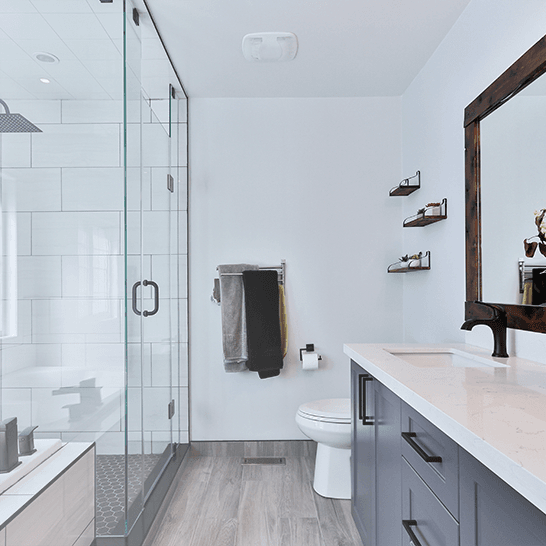WHERE ARE THE MICROBE NESTS IN YOUR HOME?
We can’t see microbes, but they are everywhere. They are part of our lives and are even beneficial to us. However, the presence of certain microorganisms in sensitive areas can be harmful to human health.
Our homes are an ideal place for these microorganisms to live. They have everything they need to thrive: water, an ideal temperature, and plenty of food. Our better insulated, less ventilated and warmer modern homes also encourage their proliferation.
What are the main locations of microbes in our homes?
I.
The kitchen
Microbes can find their fast food in our kitchens. Microorganisms find plenty of food there, but also moisture and warmth. Stagnant water and food scraps in dishwashers are a veritable feast for microbes. But this is nothing compared to coffee machines that are not cleaned regularly. This is because the seals at the bottom of the water tanks remain damp and hot, as do the water pipes.
In the kitchen, chopping boards are also a breeding ground for bacteria. Microorganisms like to nest in the gaps created by using a knife. They can also become embedded in the porous wood of chopping boards. On a wet surface, more than 1000 bacteria per cm2 can grow, compared to 100 on a dry surface.

II.
Taps and shower heads
They deserve their own paragraph, because they harbour so many microbes. Constantly flushed with water and used primarily for cleaning; taps and shower heads are not the first targets when you think of a microbe invasion. And yet, legionella, for example, is particularly fond of the warmth of taps and shower heads, because water stagnates there between uses and is warm.
Also, people in the same house who touch taps countless times a day spread many microbes and unknowingly expose each other to them.

III.
The bathroom
Interesting fact, the toilet is not the dirtiest place in the house. According to Dr. Germ, American microbiologist Dr Gerba, these are usually cleaned regularly, precisely out of fear of germs.
Microbes can be found elsewhere: on towels, sponges, toothbrush holders, dirty laundry, in the washing machine and even on your toothbrush. Hand towels remain wet for a long time after use, allowing microbes to grow and spread from hand to hand. Toothbrush holders that are always wet and normally next to the sink are also a breeding ground for germs, as are the seals on washing machines and water collection trays. Dirty laundry that is properly separated is less of a problem, that is if it does not wait too long to be washed.
IV.
Bedding, textiles, toys and soft toys
Microorganisms also love to nestle in sofas, on carpets, in warm beds and in cushions and pillows. Some two million dust mites live in mattresses1. Because home textiles are not disinfected often and rooms are sometimes not sufficiently ventilated, dust accumulates between fibres, allowing dust mites to settle in.
Soft toys that children cling to come into contact with all kinds of potentially contaminated surfaces and contain a wide variety of microorganisms. Plastic toys are often not washed or regularly disinfected. This is also true for pet toys that are dragged around the house and infested with germs.
V.
Our electronic accessories
You only have to turn over your keyboard to realise how infested it is! Food scraps, dead skin cells and dust are embedded in the spaces between the keys. The same applies to the mouse, remote controls and any other electronic devices. Studies show that more bacteria are found on smartphone screens and also on computer keyboards than in public toilets. As we tap our mobile phone screens, we deposit sebum, the protective oily film secreted by the skin, which attracts bacteria. They travel as soon as we put our phone to our ear and mouth or put it in our bags, jackets or on the table. Food and warmth is all that is needed.

We wash our hands several times a day and we don’t think about doing the same with the things we touch on a daily basis.
The spread of microorganisms in our living environments is becoming a real public health problem. Almost 30% of the world population now suffers from allergies (compared to 3.8% in 1968), half of which are caused by dust mites. According to the World Health Organization (WHO), allergies are now the fourth most common chronic disease in the world after cancer, AIDs and cardiovascular disease.
Now is the time for everybody to take an interest in the subject and adopt the right habits to reduce microorganisms that are potentially harmful to our health as much as possible. However, sometimes cleaning is not enough. Disinfection requires either the use of chemicals, which can be hazardous to health, or a temperature high enough to neutralise them. You need to have the right tools at your disposal. Among them, DMS is one of the radical solutions.